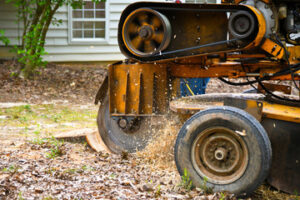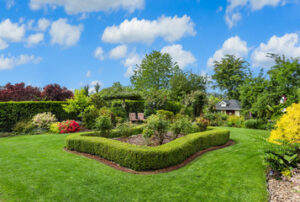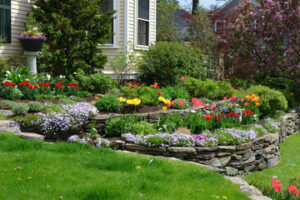Life Insurance gives you financial protection while you are alive, and peace of mind knowing your loved ones will be cared for after you’re gone. It’s especially important to have if you have people depending on you.

Look for a company with high ratings for illustration reliability, a good complaint record and an A++ financial rating from AM Best. Consider a policy that pays dividends to eligible beneficiaries each year. Contact Life Insurance Anderson SC for professional help.
Term life insurance offers simple, affordable protection that lasts for a specific period of time. Whether you’re looking to cover your mortgage or other debts, leave money for your family after your death or absorb funeral expenses, a term policy can provide peace of mind by providing coverage when you need it most.
With this kind of policy, you pay a premium and if you die during the term, your beneficiaries receive the payout. Generally, premiums stay the same throughout the term of the policy. Because of this, it’s often the most economical way to get coverage.
If you decide to cancel your policy before the end of the term, you’ll incur a surrender charge and your coverage will no longer be in effect. You may also be able to convert your term policy into a permanent life insurance policy, but you will need to undergo full underwriting (which includes a medical exam and a health questionnaire).
This type of insurance is designed to offer a savings element along with a death benefit. In most cases, a portion of each premium is allocated to a savings vehicle that typically earns a money market rate of interest. If you cancel or reduce your premium, any money in the savings accumulation account will be used up and your death benefit and coverage could lapse.
You can choose to designate one or more beneficiaries who will receive your death benefit when you pass away. Typically, this is a spouse or children, but it can be a trust, a charitable organization or a friend.
When choosing a policy, it’s important to understand that a policy with no cash value has no tax advantages. However, some policies with a cash value feature offer tax benefits that can be beneficial to some customers.
Regardless of which kind of life insurance you choose, a qualified Primerica representative can help you determine what kind of coverage is right for you and explain any differences between different types of coverage, such as term vs. permanent. You can also schedule an appointment with a local representative to discuss your needs in more detail.
Whole Life
Whole life insurance, also known as permanent life insurance, offers a death benefit and savings component that can last your entire lifetime. This type of policy typically provides a guaranteed death benefit and level premiums, although it is more expensive than term life policies.
The difference between whole life and other types of life insurance is that a portion of each level premium goes toward a savings component, or cash value, which earns interest on a tax-deferred basis. The policy owner can withdraw or borrow from the cash value at any time, though doing so may reduce the death benefit.
Because of this, a whole life policy can offer greater peace of mind to families who need to ensure their breadwinners will be able to cover final expenses and provide an income for their loved ones in the event of their death. It can also act as a savings vehicle for those who want to build their wealth over the long term and create a legacy for family, charity, or business.
Another advantage of whole life insurance is that it allows the insured to choose a beneficiary and keep this information up to date, unlike many other types of financial products. This is important because the life insurance company is contractually obligated to pay the beneficiaries designated on the policy. This is a unique feature and one that helps to ease the burden of funeral costs or other debts.
When choosing a whole life policy, it is important to work with a trusted financial professional who can help you understand your life insurance options. A Northwestern Mutual financial advisor can walk you through your options and show how whole life insurance can work alongside other aspects of your financial plan to support the goals you have for yourself and those you love.
When selecting a life insurance policy, it is also important to look for companies with high financial strength ratings from an independent rating agency such as A.M. Best, Moody’s Investor Service or Standard & Poor’s. You can also talk to a life insurance or financial professional who is a part of our network to help you find a solution that fits your needs.
Universal Life
Like whole life insurance, universal life policies also have a savings component called “cash value.” However, unlike whole life, the cash value can build at a variable rate or offer investment options, such as those tied to market indexes. This allows you to choose the type of investment risk you’re comfortable taking.2 With a UL policy, you can choose to invest a portion of your premium into the investment side and have the option to access that money, typically tax-free, in the form of partial withdrawals or loans. Loans will reduce your death benefit, but are usually cheaper than personal loans and can be paid back at any time, without affecting the policy’s cash value or earning potential.
UL offers flexible premiums (within maximum and minimum limits), a flexible death benefit1, the ability to borrow against or withdraw accumulated cash values,2 and the flexibility to increase coverage as needs change. It’s a good choice for individuals who want the security of permanent protection with the ability to adjust the policy down the road, as well as those who may have limited budgets.
In addition, a UL policy can provide you with coverage for two people on one policy and is usually more affordable than purchasing separate whole or universal policies. In this case, the death benefits are payable at the death of the first insured to help cover expenses and estate taxes. It’s often used by business owners to fund buy-sell agreements and is popular with couples who desire the security of permanent protection with the flexibility to change coverage amounts or premiums.
While these features are attractive, it’s important to consider the fees involved in any life insurance policy. These include a variety of charges for things such as administrative fees, commissions and insurance costs, which can dramatically reduce the amount of cash your policy accumulates over time. If you’re considering a universal life policy, it’s a good idea to sit down with a financial services professional to compare the different options available and find the right fit for you.
Variable Life
A variation of the universal life insurance policy, a variable universal life (VUL) policy allows you to put your cash-value component into separate investment accounts that function like mutual funds. This gives you more control over the investment component of your policy and offers greater potential earning potential – as well as greater market risk.
The underlying investments in a variable life policy follow the same regulations as securities, so they’re considered investment contracts. Therefore, the gains and losses in your investments will affect the death benefit and cash value of your policy. However, you can often diversify your account holdings to limit your exposure.
Like whole and UL policies, VUL policies offer lifetime protection with a death benefit and the ability to build up cash values. These types of policies are a good option for people who want life insurance coverage and have the flexibility to adjust their premium payments and death benefits.
When you purchase a VUL policy, you’ll receive information that explains how each account within the policy works. This information is called a prospectus. You’ll need to carefully review the prospectus to make sure that you understand what the policy charges and fees are. Some fees are based on the risk that you present to the insurance company, so your fees will be different from another person’s.
You’ll need to keep in mind that you can run into trouble if you spend too much of your cash-value components on premiums. If you don’t have enough money to pay your premiums, the policy will lapse and your beneficiaries won’t get the death benefit you paid for. You may be able to borrow against your cash-value, but it will reduce the amount of money that you’ll have available in the future.
If you decide that a variable life or universal life insurance policy is right for you, you’ll need to look closely at the internal policy costs and historical performance of the underlying investment funds. You should be able to find out more about these factors from a financial professional or independent life insurance agent.








